Rain-lashed ruins of a desolate fort, a submerged church and two intricately carved half-forgotten temples. Ananya Ghosh goes on a trip down South, steering clear of the backwaters and spice gardens
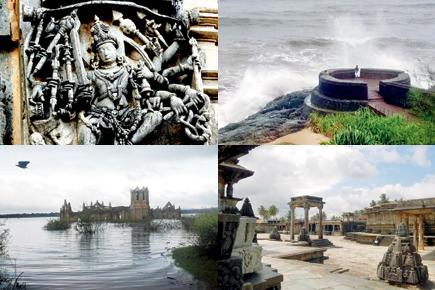
Karnataka and Kerala
Karnataka and Kerala
Best time to visit: July-August
You need: 3-4 days
ADVERTISEMENT
Monsoon is the time for upside down cities stuck in potholes, melted taillights on busy roads, high-rises stabbing dark nimbus cloud in the backdrop of a dissolving horizon and the time to travel to fairytale lands, replete with overcast skies. This year, I decided to chase the monsoons down South and on my to-do list were some off-the-tourist-map destinations.
Fernweh for a fort Bekal fort has long been on my bucketlist.
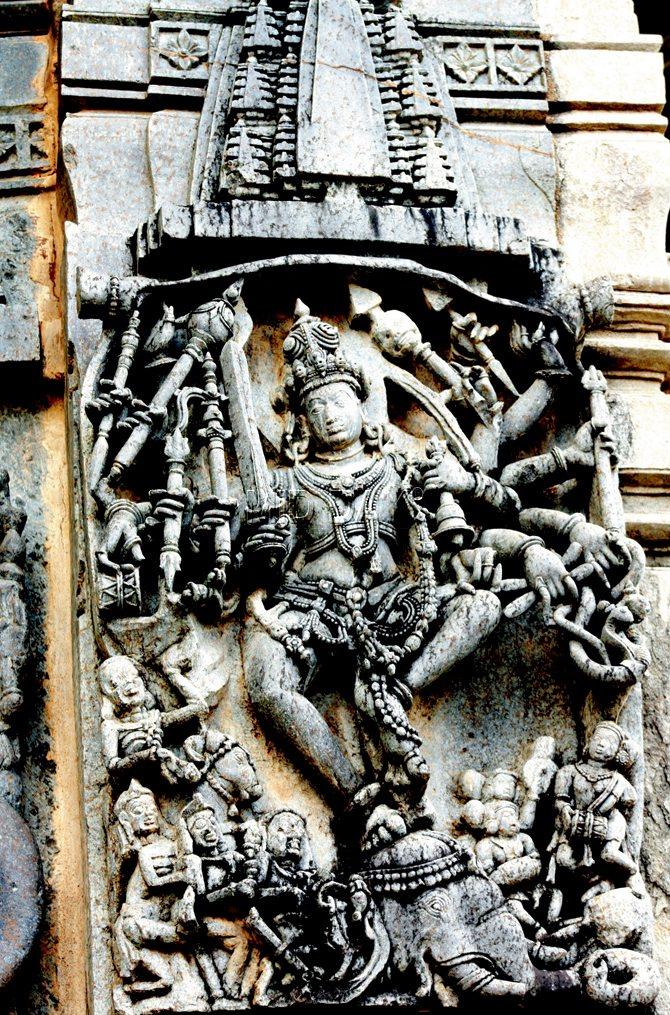
Depiction of Shiva tearing Gajasura at Chennakesava Temple
Tu hi re, tu hi re, tere binaa main kaise jiyun...Shekar (Arvind Swamy) standing on a wave-battered cliff, fervently singing those lines while a meek-looking Shaila (Manisha Koirala) braves the tempestuous sea and embarks on that epic run on the backdrop of the rain-soaked ruins of a fort. Mani Ratnam’s Bombay gave Indian cinema one of its most memorable song sequences of all time and my young heart a wanderlust. Back then, I staunchly believed that if I ever manage to reach that wave-lashed Bekal fort, I would find Arvind Swamy still standing in a over-sized blue-white stripe tee-shirt with his arms wide open for me.
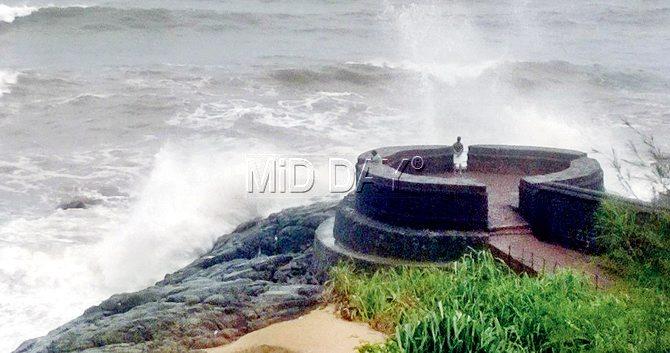
A man enjoys the waves standing on the bastion of Fort Bekal
Twenty years on, my affection for Arvind Swamy has receded, much like his hairline. Yet, the song never fails to give me goosebumps. Each time I hear those lines, I go warm and fuzzy and find myself running through that rain-lashed ruin-pierced landscape.
After an almost eight-kilometre rickshaw ride from my hotel at Kanhangad, when I finally reach the gates of the desolate Bekal Fort, it is noon. The sea citadel, situated in Kasaragod, the Northernmost district of Kerala, was once an important military station under Tipu Sultan’s reign and later fell into the hands of British East India Company. It welcomes me with no particular enthusiasm. As I walk through the gate, I find myself inside a walled patch of greenery and a calm sea stoking the feet of the chunky laterite structure. Although, according to Archeological Survey of India’s website, there is supposed to be ‘a mint house and a palace complex from the medieval period, along with the remains of a darbar hall and temple complex,’ I fail to find any such structure. All I can discern is the remnants of an observation tower. Although the part of the fort that protrudes inside the sea, offers a nice view, it is hardly ‘stunning’. With all the romance associated with the fort evaporating under the hot midday sun and the edges of my dream sequence slowly melting, I find myself regretting my decision to visit the place.
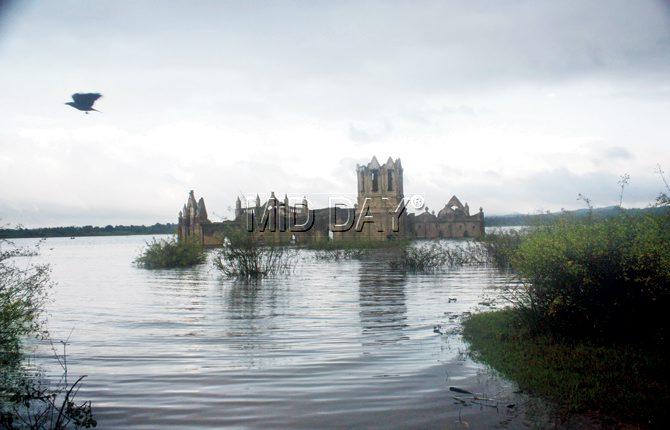
The Holy Rosary Church at Shettihali. Pics/Ananya Ghosh
Suddenly, the scene starts to change. Within seconds, dark clouds pull a heavy curtain on the sun, a thick petrichor permeates the air, and the sea begins to change colour — first to emerald green and then to Prussian blue. Rain emerges from the horizon and comes dashing towards the land. And another love story unfolds amid the rain-lashed ruins. But this time it is of unrequited love, that between the sea and Tipu Sultan’s fort whose moss-covered walls stoically thwart the wild passion of the billowing sea. I stand transfixed, with sand in my hair and a taste of ocean in my tongue. In a moment of epiphany I realise that the ‘missing element’ was this announced shower of rain. Indeed nature can imbue beauty in even the most trivial of things.
A submerged church
Next day, after a five-hour bus journey, I reach Hassan. My next destination is an obscure church situated near a small village called Shettihalli near this unremarkable town of Karnataka. Although not still on the tourist radar, built around 1810 (though most websites mention it as 1860) by French missionary Abbe Jean Antoine Dubois, this church has the dubious distinction of being India’s only submerged church.

Hoysaleswara Temple at Halebidu
It is believed that in its heydays, the Holy Rosary Church served Shettihali and its nearby villages, and had a convent and a dispensary for the poor. In 1979, the government decided to build a dam on Hemavati River. As a collateral damage, the village was inundated. But the church still stands tall. It gets submerged every monsoon, only to reappear in its full glory during the summer once the waters dry up.
A mere one-and-a-half hour ride from the city Hassan, when I reach the church, I am greeted by an eerie calm. Although, I had read up about the place, and even seen pictures, nothing prepared me for the experience. Standing all alone in the marsh, facing a raven infested skeleton of a century-old gothic structure jutting out of the dark placid waters of the Gorur Dam on the backdrop of an overcast sky, I feel a chill run down my spine. This place could easily double up as the castle of a small-town Count Dracula. I stand, mesmerised as the reflection of clouds change the hue of the still water of the lake and the muted rays of the sun falling softly on the arches leave a resplendent glow on the imposing structure. Suddenly, out of nowhere, torrential rain unleashes itself on the valley, blurring every hint of the hauntingly beautiful site. The landscape turns white. I run into my car for cover. As I hit the dirt road the rain stops as abruptly as it had started. Through the rear-view mirror, I could see the Holy Rosary Church of Shettihalli shimmering under a freshly showered sun.
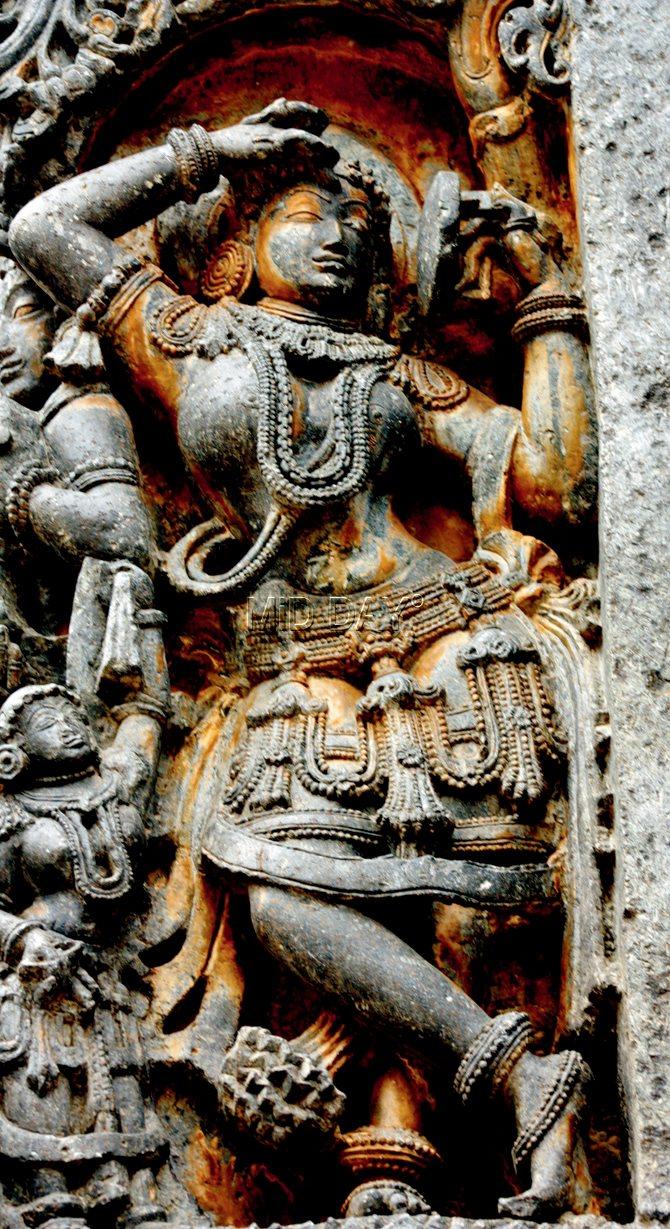
The famous Darpana Sundari of Chennakesava Temple
Forgotten temples
Hardly-an-hour’s drive from Hassan are two more interesting ruins, that of Hoysaleswara temple (built in 1121 AD) of Halebidu and Channakeshava Temple (built in 1117 AD) of Belur. The temples predate the ruins of Hampi. When I reach the first temple (Hoysaleswara), it is around 3pm and the August sky is still wearing a gloomy look. There are hardly any tourists. Both temples, which together are currently a proposed UNESCO World Heritage site, are fine specimens of Hoysala architecture and had taken more than 100 years to build. The soapstone structures are replete with intricate sculptures and friezes.
But, unlike most such temples, erotica is kept to the minimum, often reduced to miniature pieces. Once inside the main mandap, I am greeted by life-size statues, seemingly of metal. On closer inspection, however, I realise that they are made of stone. The effect, I am told, has been achieved by polishing the stone idols with fine muslin over the years. While, the temple of Halebidu (which means ‘ruined city’) is in ruins and not in use, the temple at Belur dedicated Lord Chennakesava, which literally means handsome Kesava or Krishna, is still open to the worshippers (temple timings: 9 am to 6 pm).
I am lucky to have reached on the day of the annual abhishek of the handsome lord. I sit along with the devotees and observe the elaborate process, which entails bathing the lord with buckets of milk and then applying turmeric and sandalwood paste on him. Then I catch one of the 42 madanikas (celestial nymphs) looking down upon me from the nearby pillar—a divine smile on her face. “It’s all organic you see, no chemicals,” she seems to say. Well, certainly the six-foot tall handsome lord needs to take care of his skin.
 Subscribe today by clicking the link and stay updated with the latest news!" Click here!
Subscribe today by clicking the link and stay updated with the latest news!" Click here!






